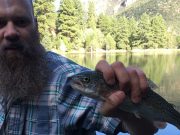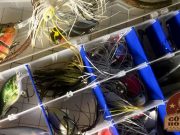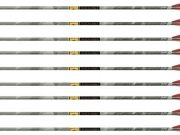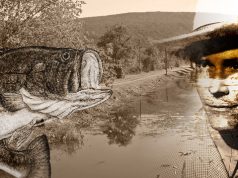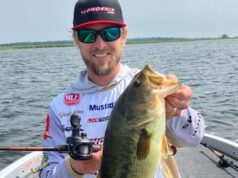Between OFFGRID and Country Hookers, I’ve written a ton of articles that featured tips from some of the top anglers in the world. While these fishermen often use their skills to win competitions, studying their techniques can help you become a better fisherman and give you an edge on those days when no one seems to be catching anything.
Look for Cover & Look for Changes

Team Toyota Angler, Mike Iaconelli says that no matter what type of fish you are targeting, you need to look for two things: Cover and Change.
“The biggest tip I can give is that bass and almost all other spices of fish love to relate to cover and change. On every cast, I try to put my lure next to some piece of cover or change. Cover can be anything like trees, bushes, docks, rocks, logs and even trash in the water (shopping carts). Change is anything that is different like a drop off in depth, a rise of the bottom, or even watercolor change.”
When fishing urban ponds or other high pressure waterways Mike says the same rules about cover and change apply, but the cover and changes will likely be a bit different.
“I attack heavily pressured urban ponds and lakes the same way I do unpressured rural fisheries. I’m always looking for cover and change and trying to present a lure that looks natural and will make the bass react. In urban fisheries cover and change are often different. Things like seawalls, drain pipes, bridge pilings and trash in the water create the perfect man made forms of cover! And always try and put your lure in a place the other anglers don’t!”
Fishing Soft Plastic Worms will Help you Become a Better Angler

If you’re just getting in to fishing, or want to really improve your overall fishing technique, Straight Talk Pro Angler Scott Canterbury says you need to start fishing with soft plastic worms.
“Anyone getting into fishing should really try worm fishing. Top water fishing and crank bait fishing will come natural. The thing about worm fishing is that it takes feel to know when your bait is on the bottom, when your bait is in a brush pile, rocks and especially when a bass strikes.”
Learning how to fish these soft plastic baits will help you learn what to look for, and how your rod and real should feel when hitting different bits of structure. It’s hard to explain in an article, but the difference between being a good angler and a guy who is just catching fish by luck is the ability to really understanding what you’re feeling as you’re reeling in your line.
Start studying your local waterways and research different fishing techniques.
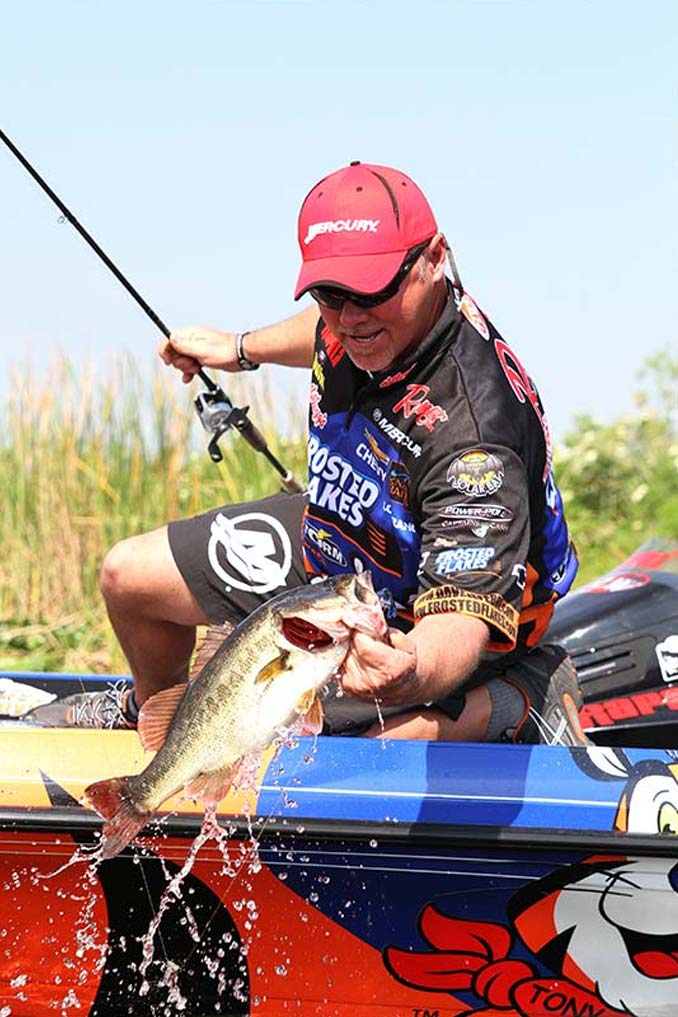
Even in large cities, there are numerous different spots where you can catch fish. From local rivers and streams, to small park and golf course ponds, start studying your local environment and take note of any areas that may contain fish, crawdads and frogs.
Kellogg’s Frosted Flakes pro angler Dave Lefebre tells us it’s all about figuring out patterns and using the resources that are already out there.
“The absolute best advice I can give is to simply use your resources. Every answer to any question you have, any technique you want to learn is available online. Watch videos, read articles, and keep your eyes on the tournaments too.”… “Patterns are the key more often than not because fish often move from even the perfect spots, but once you find that certain thing they are liking, you can keep covering water and fishing fresh places.”
The “Guerrilla Approach” Towards Fishing

In our article on Backcountry Guerrilla Fishing, backcountry fishing expert Ryan Weaver shared his Guerilla fishing techniques:
In battle, the guerrilla fighter is surreptitious, sneaky, and extremely mobile. I apply these same “guerrilla tactics” to fly-fishing when I’m on a clear water stream or river. Armed with cutting-edge polarized shades, I pace along the side of the river, keeping my eyes fixed on the water until I locate a fish.
In clear water streams, fish know that predators of all sorts are constantly targeting them, so in order to be an effective angler it is essential that you remain unseen. Whether you’re fishing for 24” cutthroats deep in the Teton Wilderness or ferocious smallmouths on a remote stretch of the Devils River, stealth is always the name of the game. Often times I hike on top of a ledge with my eyes glued to the water, studying the stream and looking for eddies and inlets where fish may post up to ambush prey.
As soon as I see a fish worth targeting, I drop to the ground to ensure that I won’t be seen while constantly keeping an eye on the fish. I then plot out my next maneuver. If I’m fly-fishing and am surrounded by brush and thicket, often times the most strategic approach is to simply wait and see if the fish moves into a more favorable position to make a cast. On the other hand, if the fish is on the hunt in the shallows, the best bet may be to get a fly in the water as soon as possible while the fish is within reach.
These guerrilla fishing tactics are effective on just about any clear water steam for just about any type of game fish. Remember that your eyes are your greatest weapons, so be sure to invest in a good pair of polarized shades before taking off into the wilderness. You’re crippled without them.
Understand how Seasonal Changes can Effect Fish Behavior

I fish year-round, so I know that seasonal weather patterns can have a huge effect on how I fish. For instance, during cold weather conditions bass will often become lethargic, causing you to tweak how you present the bait to the fish – often just slowing down your techniques can be enough to cause a bass to hit your bait during the winter.
Robert Richardson, owner of Offgridsurvival.com & CountryHookers.com shares his cold weather fishing tips:
The first thing you need to know about wintertime fishing is what happens to bass in cold weather. When the water starts to cool a bass’ metabolism starts to slow down, making them seem almost lethargic. For a fisherman that’s, not good news; unless you know how to trigger a strike.
While bass eat a lot less in the winter, they will strike when presented with the right bait, in the right way. In cold conditions that usually means slowing down retrieves, cutting down on the size of your bait, and using a little bit of finesse – not to mention a whole lot of patience.
Match the Hatch

Another important thing to understand is what are the fish eating — this can very from day to day. For instance, when fly fishing, you’ll often hear people talk about matching the hatch. The saying comes from a fly-fisherman’s attempt to match what flies should be used to fool the fish into thinking its a natural insect — even things like where the insect is in it’s lifecycle are taken into count.
When hitting new waters, this can be figured out by taking a quick water sample so you know exactly what trout (or target fish) are eating; you can then mimic aquatic insects in their larvae, pupae, or nymph stages.

 <
<













